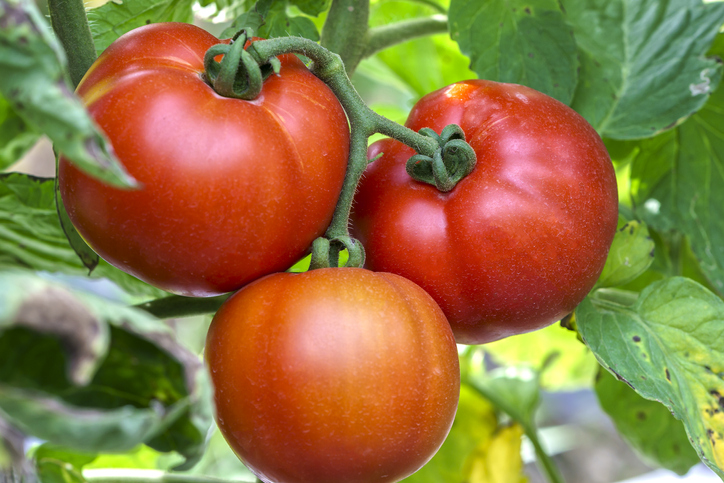When it comes to tomatoes, everybody is an expert. And in the Paradise Valley Estates community, there is ample evidence of this fact. Jerry Hedrick, his golf cart and his suitable attire, travels our community with luscious tomatoes carefully labeled as to species. But this is not a new trend.
My father and uncles had “victory gardens” during World War II and specialized in tomato cultivation. Thick-stemmed, with lush green foliage, the vines bent under the weight of heavy, ripe fruit. There was always a huge harvest, and the problem of how to deal with hundreds of pounds of tomatoes was a primary concern. For the war effort, families were urged to can all the produce they grew in their victory gardens, and my parents were very patriotic urban farmers.
When the war ended and victory gardens were no longer a patriotic responsibility, my father took up French intensive gardening. Having spent several years planting and growing tomatoes from seedlings purchased at the nursery, he next decided to take up hybridization. He dreamed of creating an entirely new tomato, perfectly resistant to bruising, worms, leaf curl, and other threats. He located an indoor planting table and installed it in the basement. He concocted a strange planting mix, hauling gypsum, dehydrated manure, and damp loam down the steep cellar steps. He installed two long bars of fluorescent lights above the planting table that gave off an eerie bluish glow day and night. If the neighbors noticed the permanent spectral glow emanating from our basement, they were polite enough not to mention it.
From the many seed catalogs that crowded our mailbox in January, he chose selectively, a Beefsteak here, a Big Boy there, and a few Ace or Celebrity possibilities. He judged that it would take several seasonal rounds before he found the perfect seeds for his experiment, but he was patient, and, thanks to his early retirement, he had plenty of time.
When the tomato seeds germinated and grew to about four inches under their artificial sunlight, he transplanted each seedling to its own pot and placed them in east-facing basement windows. The tomatoes thrived, and when all danger of frost passed, my father gently transferred his gawky vines to the outdoor garden where, with the aid of his recently constructed compost heap, they had all the advantages of organic fertilizer.
My father’s last tomatoes were grown on the patio of a retirement apartment in Baltimore, and my mother enjoyed sun-ripened, sliced tomatoes from this mini-garden every summer. My sister, a genealogist, decided that a tomato must be a family tradition in a round red casing.




